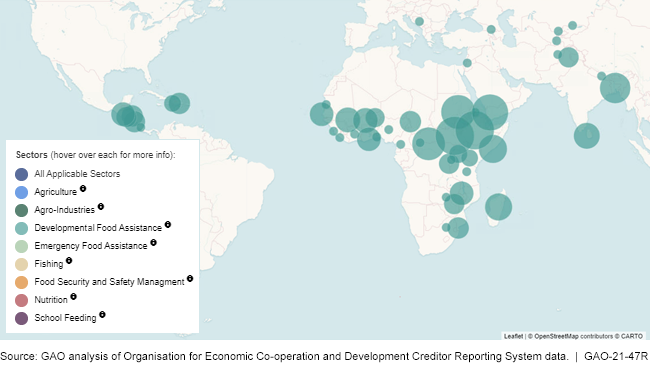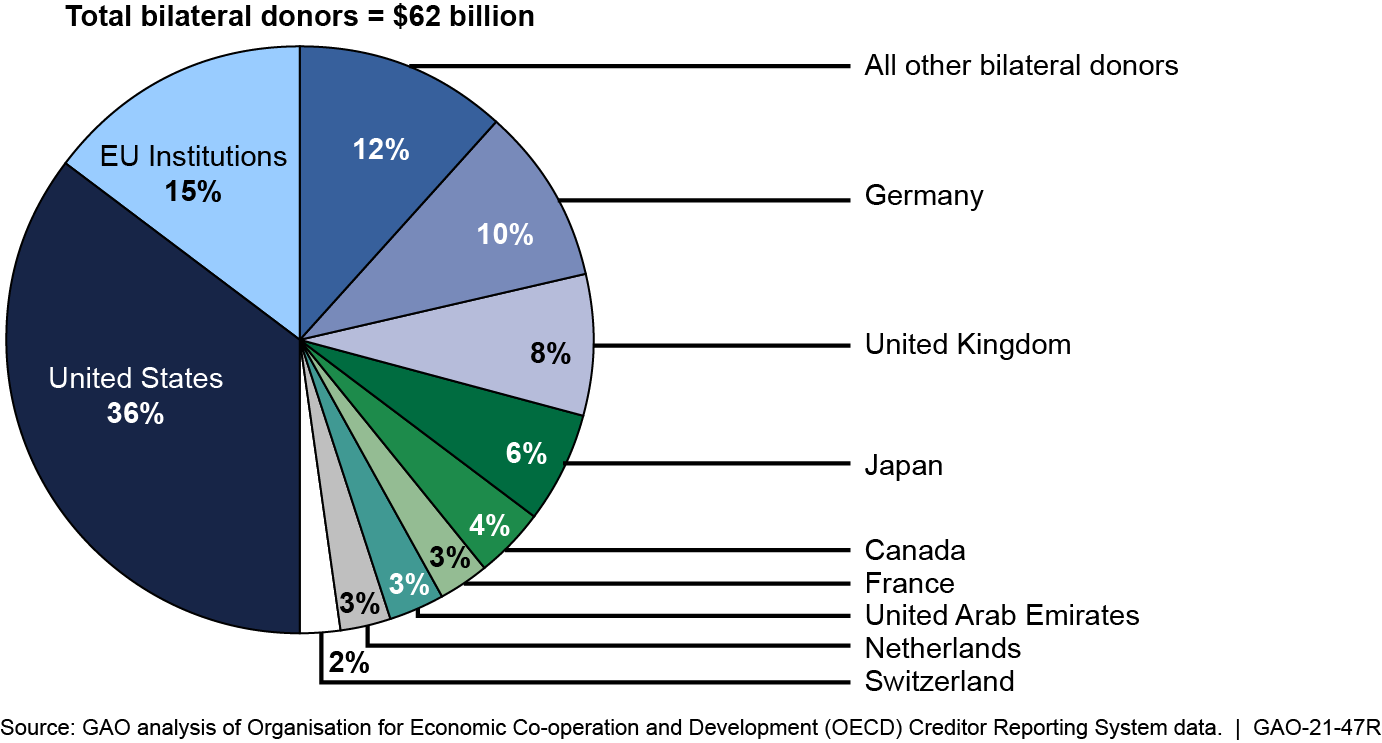Global Food Security: Information on Spending and Types of Assistance Provided by the United States and Other Donors
Fast Facts
From 2014 through 2018, the U.S. and other donors spent an estimated $75 billion on global food security assistance. This included, for example, supplying seeds and fertilizer, providing food to crisis-affected people, addressing nutrient deficiencies, and providing school meals.
The U.S., the largest country donor, accounted for more than $22 billion of this total. About $62 billion (82%) came from individual countries (including the U.S.) and the other $13 billion (18%) came from international organizations and other multilateral donors.
Our interactive graphic provides a nation-by-nation breakdown of how the assistance was distributed.
An excerpt from our interactive graphic, showing U.S. spending on Developmental Food Assistance in 2018

Highlights
What GAO Found
From 2014 through 2018, the United States and other donors provided an estimated total of more than $75 billion in global food security assistance, with the United States accounting for more than $22 billion of this total. Other countries disbursed a total of $40 billion (see figure), and multilateral donors, including international organizations and institutions with government membership, disbursed $13 billion in global food security assistance. GAO estimated that from 2014 through 2018, annual global funding for food security assistance increased from more than $13 billion to more than $16 billion.
Estimated Bilateral Disbursements for Global Food Security Assistance, 2014 through 2018

As the largest bilateral donor of this assistance, the United States used various programs and methods to administer its assistance. These programs primarily support both emergency and nonemergency food assistance, which are delivered as either in-kind food or cash-based assistance. While the U.S. Agency for International Development and the U.S. Department of Agriculture administer most of this assistance, other U.S. agencies also conduct global food security activities, including support for agriculture and nutrition, as well as water and sanitation.
Why GAO Did This Study
The U.S. Global Food Security Act of 2016 defines food and nutrition security as access to, and availability, utilization, and stability of, sufficient food to meet caloric and nutritional needs for an active and healthy life. In 2020, the United Nations (UN) reported that nearly 690 million people in the world were undernourished. According to this reporting, the number of undernourished people has increased over the last six years. Further, the Coronavirus Disease pandemic is expected to worsen food insecurity levels around the world. The UN projects that at least 80 million people could become undernourished in 2020 as a result of the pandemic. GAO was asked to describe global food security assistance from the United States and other countries and organizations. This report examines the amount and types of food security assistance that the United States and other donors have provided globally from 2014 through 2018 (the most recent year for which data were available).
For more information, contact Chelsa Kenney Gurkin at 202-512-2964 or GurkinC@gao.gov.
